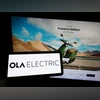Electric two-wheeler (e2W) maker Ola Electric has announced an ambitious plan to expand its store network to 4,000 locations by the end of this month. This marks a fourfold increase, with over 3,200 new outlets set to open alongside 800 existing stores, all co-located with service facilities.
With this expansion, Ola Electric aims to deliver its e2Ws to every pincode in the country, boosting access to e2Ws in both urban and rural areas. The expansion also positions the company to have the country’s largest e2W distribution network, addressing the growing demand for sustainable mobility.
Markets have reacted positively to the news, with shares rising by 6.6 per cent, ending the day’s trade at Rs 93.26 on the BSE.
Ola Electric Co-founder and Chief Executive Officer Director Bhavish Aggarwal said, “With this massive network, we are democratising electric mobility, enabling more customers to access our products and adding momentum to the domestic electric vehicle economy.”
In addition to store expansion, Ola Electric has launched its new range of electric scooters (e-scooters), including the Ola Gig and S1 Z series. Prices for these e-scooters start at Rs 39,999, with deliveries set to begin in 2025. The range is designed to meet the needs of both personal and commercial customers, offering affordable and flexible solutions, including removable batteries for rural, semi-urban, and urban customers. The company is also preparing for the launch of its Roadster motorcycle series, with prices starting from Rs 74,999.
Also Read
The company currently operates 800 stores, one-fifth of the number of outlets its competitors have.
In the e2W market, Ola regained market share in October, reaching 31 per cent after five months of decline, driven by festival season sales and improved deliveries.
According to Vahan data, Ola Electric sold 41,605 units in October, up from 24,716 in September, while rivals Bajaj Auto, TVS Motor Company, and Ather Energy recorded market shares of 25.7 per cent, 22.3 per cent, and 11.9 per cent, respectively.
Ola Electric’s market share had previously fallen from a high of 53.6 per cent in April to 32.1 per cent in August, amid rising complaints over after-sales service and quality issues.
The company also introduced initiatives like the #HyperService and its Network Partner programme, aimed at onboarding 10,000 partners across sales and service by the end of 2025.
Ola Electric further announced the EV Service Training programme, which aims to train 100,000 third-party mechanics to be EV-ready.

)